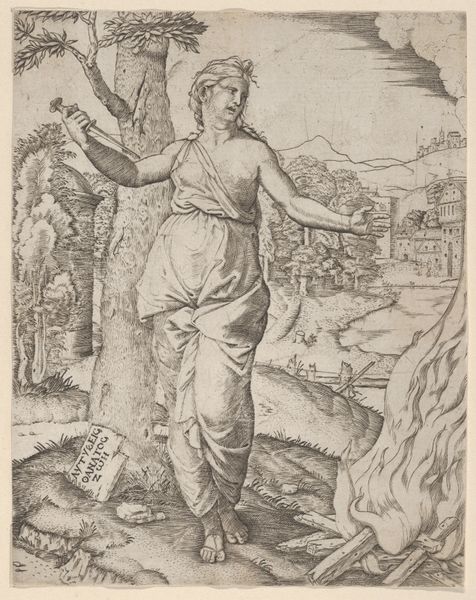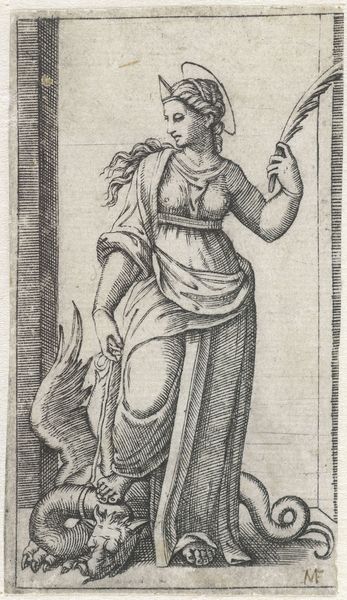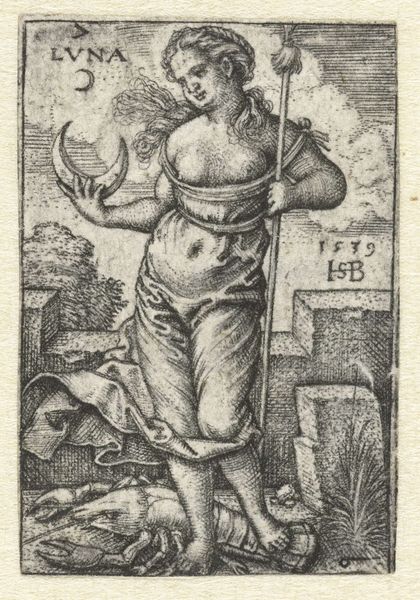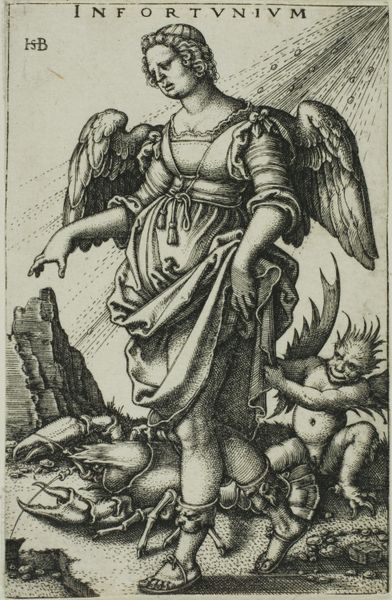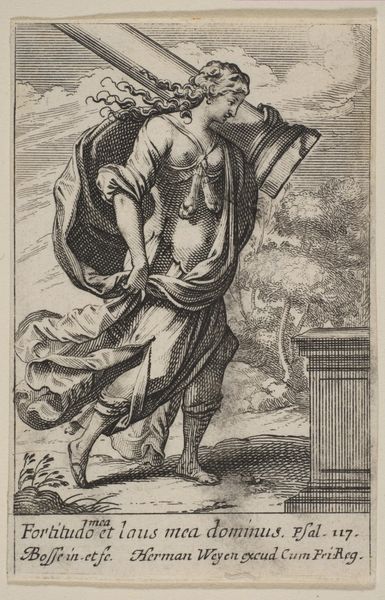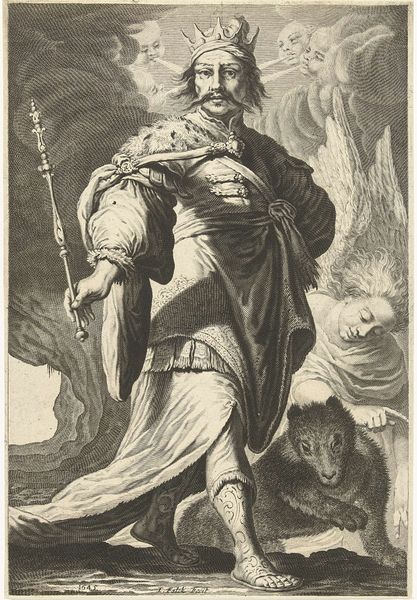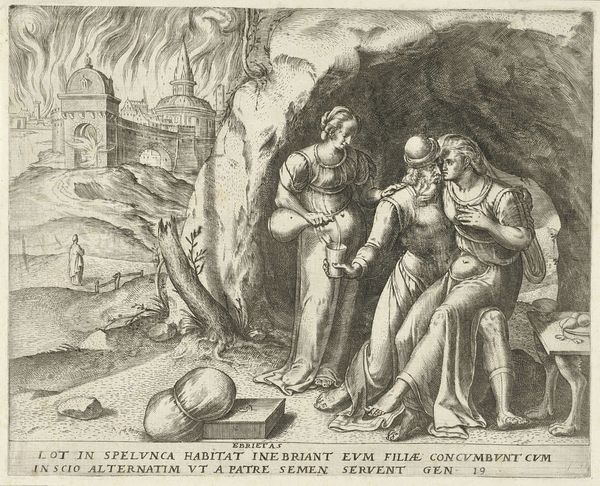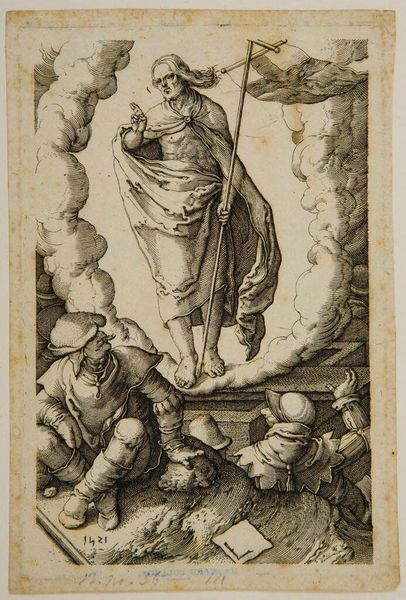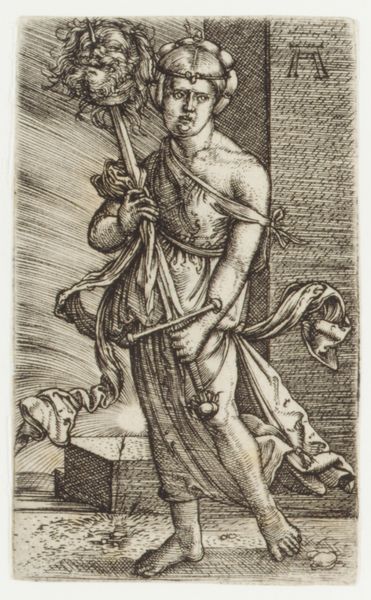
print, engraving
#
allegory
# print
#
pen sketch
#
landscape
#
figuration
#
line
#
history-painting
#
northern-renaissance
#
nude
#
engraving
Dimensions: height 178 mm, width 125 mm
Copyright: Rijks Museum: Open Domain
This print, made in 1580 by an anonymous artist, depicts Dido taking her own life. It's an engraving, meaning the artist would have used a tool called a burin to carve lines into a metal plate, likely copper, to hold ink. The plate would then be pressed onto paper, transferring the image. Engraving was a skilled craft, requiring precision and control. The dense network of lines creates a sense of depth and texture, look at the flames and the detailed rendering of Dido's drapery. Notice how the evenness of the lines creates a consistent tone across the image. Prints like these were relatively easy to produce in multiples and circulate, making stories like Dido's accessible to a wide audience. The act of engraving itself becomes a means of production, translating classical narratives into a tangible form for consumption and interpretation. It shows how a detailed, skilled process can shape the circulation of stories and values in society.
Comments
No comments
Be the first to comment and join the conversation on the ultimate creative platform.
